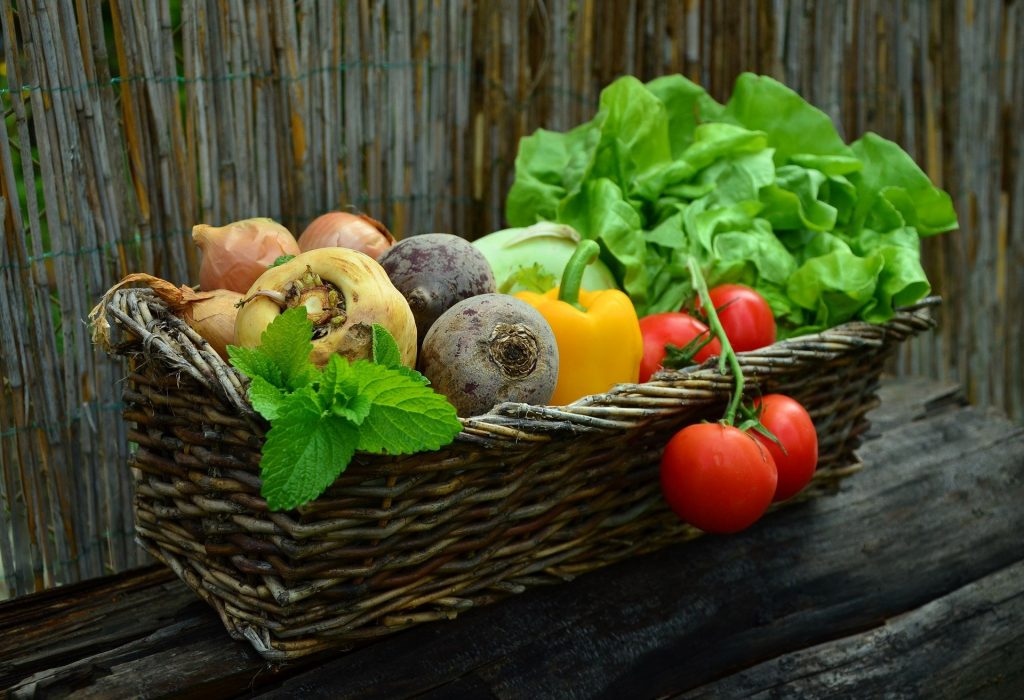by Christina Pelliccio
“We are built on the idea that eating food that’s as fresh as possible is the ideal,” said Varun Mehra, manager of Chez Panisse in Berkeley, a restaurant that has been largely celebrated for its local and organic food since its opening in 1971.
“There’s a pretty long history,” he said, explaining the vision that Alice Waters, the founder of Chez Panisse, had 50 years ago, when she sought to introduce the French style of ‘market cooking’ to Berkeley. As one of the first ‘farm-to-table’ restaurants in the nation, Chez Panisse sparked a movement across the country to promote local food sourcing.
This movement is recognized as the farm-to-table movement, focusing on serving local food by buying directly from the producer, rather than going through a distributor. This method incorporates a form of ‘food traceability’ into the food industry in which consumers are able to know exactly where their food is coming from.
Due to the large success and influence of Chez Panisse, the farm-to-table movement began to gradually grow before exploding in the 2000s. Now, farm-to-table restaurants and programs are available in over 30 states, with a significant number of locations in the Berkeley area.
Since its recent expansion, this movement has had a considerable impact on sustainable food sourcing and preparation in the US food industry. Producing and consuming food locally eliminates the need for food to be shipped long distances, thereby decreasing fuel consumption and greenhouse gas emissions. Because locally-sourced food is always fresh, there is also no need to add preservatives, meaning that customers can enjoy their meals knowing that they contain only natural ingredients.
In addition to its environmental impact, the farm-to-table movement also has a positive impact on local economies. Farm-to-table restaurants and programs always deal directly with the farmer they are sourcing from, so you can be sure that the money you spend buying food from a farm-to-table establishment will go directly back to local farmers. Supporting local farms is a great way to increase the availability of locally-grown and organic food in your community.
In the Berkeley area specifically, the farm-to-table movement has emerged through three main avenues: community-supported agriculture (CSA) programs, on-campus student-run gardens, and sustainable restaurants that source food locally.
Community Supported Agriculture (CSA) is a food distribution system that connects farmers directly to consumers. In turn, consumers buy shares of a farm’s harvest, and then receive portions of produce weekly as the crops are harvested. Consumers typically buy shares annually or quarterly, but some programs even offer monthly or weekly memberships.
In Berkeley, there are a number of established CSA programs, some of the most notable being Brown Girl Farms, Black Earth Farms, and Acta Non Verba.
In addition to this farm-to-consumer method, the movement has also grown to include farm-to-student options, even on Berkeley’s own campus. One notable example of this is Berkeley Student Farms (BSF), a coalition of eight student-organized gardens on campus that prioritize sustainable and equitable food distribution.
A lot of the food that is grown at these gardens goes directly to students, with BSF donating around 50% of their produce annually to the UC Berkeley Basic Needs Center Food Pantry, which offers emergency food relief to students, faculty, and staff.
BSF also makes sustainability central to their food production by implementing agroecological farming approaches, with focus on “fostering healthy soil communities, conserving resources, and promoting biodiversity of the surrounding natural landscapes.”
The last main approach of the farm-to-table movement in Berkeley follows the farm-to-restaurant model, in which restaurants work directly with local farmers to buy fresh and flavorful ingredients. Some of the most popular farm-to-table restaurants in Berkeley include Chez Panisse, Gather, and Cancun Sabor Mexicano, to name a few.
Varun Mehra, the General Manager of Chez Panisse, explained that they have been working with a network of small farmers since 1971 to serve entirely local food. “At this point, we buy locally from somewhere between 80 and 100 farms a year, mostly from this one farm that’s called Canard Family Farm,” he said.
UC Berkeley also offers farm-to-table restaurant and café options, such as Brown’s Café and Golden Bear Café on campus. Sunil Chako, Cal Dining Assistant Director of Commodities and Purchasing, explained that although purchasing directly from local farms is challenging for Berkeley, Cal Dining makes an effort to buy from distributors that source locally.
“We source products from approved distributors with stipulation to provide us with as many products that fall under UCOP sustainability food sourcing criteria,” he explained. “Our distributors, especially produce suppliers, provide us with as much local produce available, I would say 90% from various small farmers and collectives such as Coke Farms Collective.”
Chako also acknowledged some of the challenges with pursuing the farm-to-table method on campus, such as the variance in food availability. “Farm-to-table direct purchase is rather challenging since most small/medium growers do not have the bandwidth to offer steady supply and delivery capabilities,” Chako explained. “Nevertheless, we always entertain and welcome ongoing discussion with various farmers and producers for any future prospects and encourage our distributors to work with small businesses.”
By addressing these challenges, Chako helps shed light on the fact that although these three methods of farm-to-table production have been incredibly successful in recent years, the movement is by no means perfect and many barriers to sustainable farming still exist.
For example, the farm-to-table movement can be a less affordable option for consumers. It is very expensive for small farmers which produce local and organic food to compete with large-scale farms, so their prices for produce can be higher than average.
A recent study in the Washington Post takes a look at this issue, comparing food prices at grocery stores and farmer’s markets. For a haul of “cage-free eggs, cheese, mushrooms, salad mix, and both organic and conventional strawberries,” the local grocery store price in the study came to be $31.37, compared to $64.62 at the local farmer’s market.
At farm-to-table restaurants, this results in the food being generally more expensive in comparison to restaurants that do not source their ingredients locally, and not all consumers can afford these higher prices.
Mehra agreed that this is a challenge that Chez Panisse and other farm-to-table restaurants in Berkeley do face, but argued that lower prices are not a viable option. “We’re paying the cost of food that allows those farmers to have a living wage and for them to be able to pay their employees a living wage,” he said. “The cost of ingredients does create access issues, which is a challenge that’s certainly worth addressing, but I don’t think that the answer is less expensive food because in the end, we want to pay people what their work is really worth.”
Another obstacle for farm-to-table restaurants is that they have to constantly change their menu in accordance with the seasons. Because they only use locally-sourced and organic ingredients, not all foods are available and fresh at all times.
Mehra explained that the seasonal availability of ingredients does not necessarily need to be seen in a negative light for restaurants like Chez Panisse, which changes its menu every day. “That things are seasonal and not available all the time is actually what works in our benefit—we only serve the [ingredients] when they’re really delicious.”
There is also some criticism over the authenticity of farm-to-table establishments. Some restaurants have been found guilty of claiming they follow the farm-to-table method to attract customers and increase prices, even though they are not actually using local ingredients. In 2016, the Tampa Bay Times published a series of articles reporting on how many so-called farm-to-table restaurants were using frozen and non-local goods.
In regards to problems associated with sustainable and small-scale farming itself, the lack of institutional help for small farmers, the difficulty of finding locations for farms, lower yields in comparison to large-scale farms, and the lack of funding for research on agroecology all create challenges for local farmers.
Reflecting on these obstacles associated with farm-to-table initiatives, it is clear the model has some room for improvement. However, despite these challenges, the movement has undeniably helped to incorporate the idea of sustainability into food systems, truly impacting the food industry over the last few decades.
Sources:
- https://www.webstaurantstore.com/blog/postdetails.cfm?post=1532#:~:text=The%20roots%20of%20the%20farm,in%20Berkeley%2C%20California%20in%201971.
- https://hearthstonelv.com/10-benefits-of-farm-to-table-restaurants/
- https://www.thespruceeats.com/community-supported-agriculture-csa-2216594
- https://www.localharvest.org/csa/
- https://www.studentfarms.berkeley.edu/about
- https://www.chezpanisse.com/1/about/
- https://www.washingtonpost.com/lifestyle/food/why-local-food-costs-more-a-strawberry-case-study/2016/06/20/c7177c56-331f-11e6-8ff7-7b6c1998b7a0_story.html
Christina Pelliccio (she/her) is a first-year student majoring in Environmental Economics & Policy. Getting involved with the environmental community and being able to share my voice on environmental issues was one of her biggest priorities when coming to Berkeley, which is what drew her to Perennial. As a Staff Writer, Christina is excited to collaborate with other passionate individuals to facilitate important discussion and education around environmental topics. Aside from being involved in environmental activism, Christina enjoys spending her free time being outdoors, painting, and listening to music.

